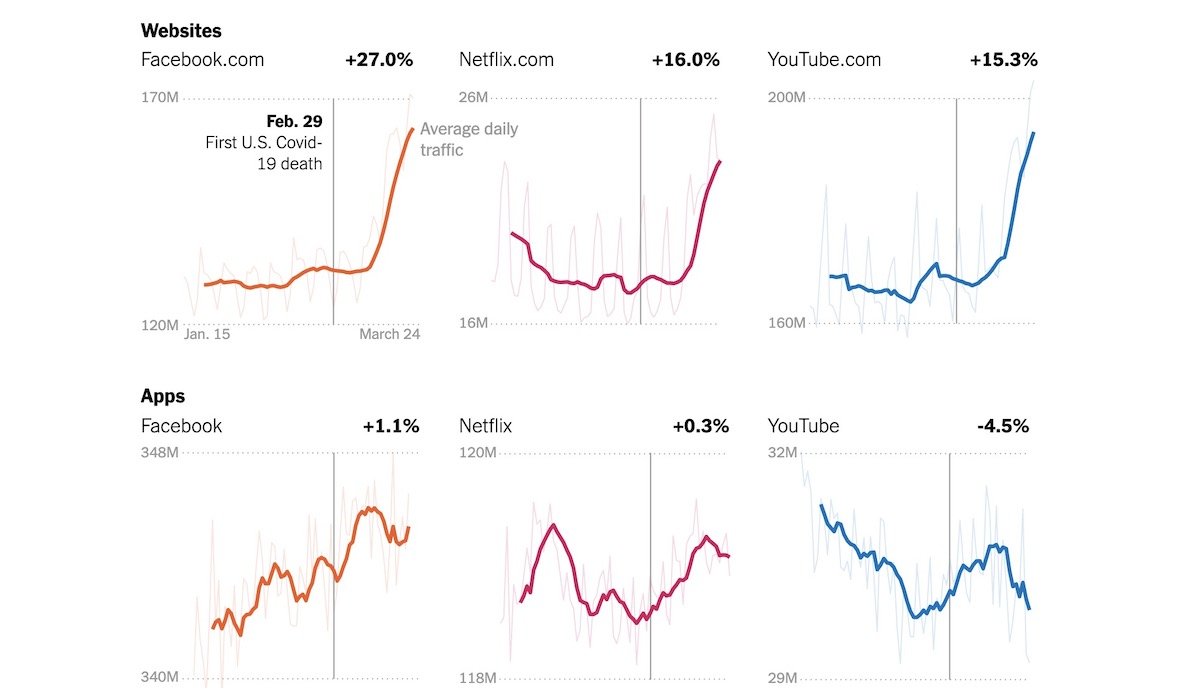As people are confined in their homes, they have switched to virtual socializing, working, education, entertainment and information sources to stay safe and deter the spread of coronavirus. Based on the current situation, The New York Times has published a report on the changes in Internet usage in the United States because of COVID-19 pandemic.
After analysis of quantifiable data from two independent data providers, Apptopia and Similar web, the reports lists down the most preferred devices, socializing sites, work and education related platforms, entertainment services and information sources used by people at home in United States during the pandemic. The main graph is divided by the platform that people are using to access these websites and apps, and numbers show that desktop usage has outgrown smartphone usage.

Data shows an impressive increase in the use of web version of services and apps like Netflix, Youtube, Twitch, Facebook and Hangouts. This represents that Americans prefer larger screens of desktops and laptops over smart phones’ small screens for entertainment, socializing, gaming and more while staying at home during the pandemic. The high usage is attributed to easy accessibility to those devices at home. As people are not going out for work, daily errands, dinners, movies, parks or drives, the use of popular apps via smartphones has reduced.
Daily users on platforms supporting e-learning and professional meetings have also increased drastically. Zoom and Google Meet are two of the most popular services being used for work and educational purposes.
Fortunately, the readership of online news sources has also increased. People are concerned about the spread of the virus and its impact on the economy, therefore, they are turning to credible news sources like The Washington Post, The New York Times and CNBC. In addition, health authorities websites like CDC are seeing increased traffic, as Americans are keeping abreast with accurate and updated coronavirus related information. We are also witnessing that Wikipedia has become more relevant now as millions of people visit it for virus related content.
With surge of viewership and usage on some platforms, there is damaging decline on the others. Sports websites, partisan news sources, and use of mobile versions of apps have seen a drastic drop, ever since the implementation of COVID-19 isolation and social distancing rules. The world is in a state of uncertainty and fear.
Therefore, companies are implementing a number of constructive changes to support the large number of daily users on their platforms and being responsible by deterring the spread of misinformation. Recently, WhatsApp implemented limits on message forwarding while Google, Instagram, Apple and YouTube have been ensuring restrictions on conspiracy theories and misinformation.
6 comments